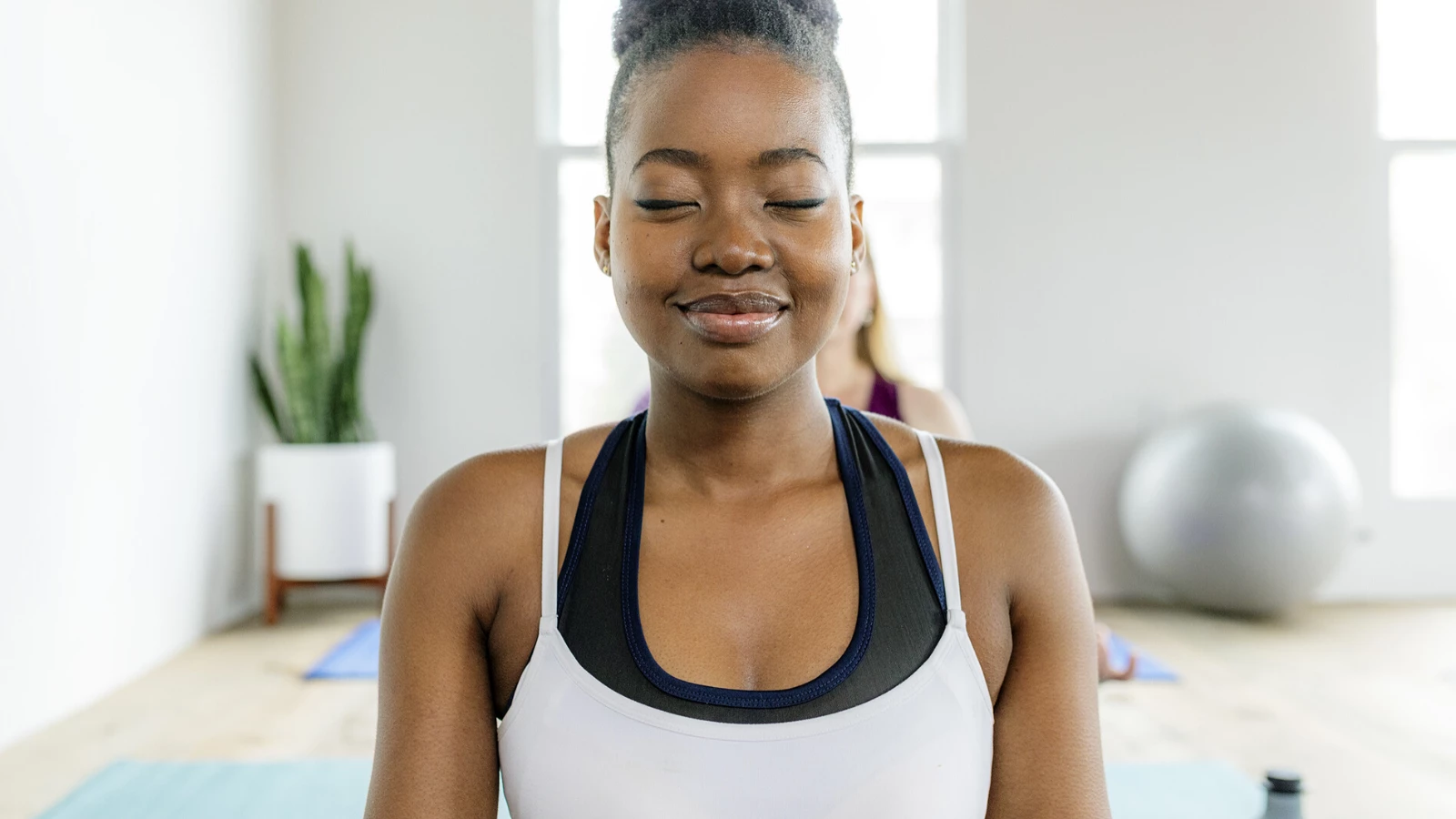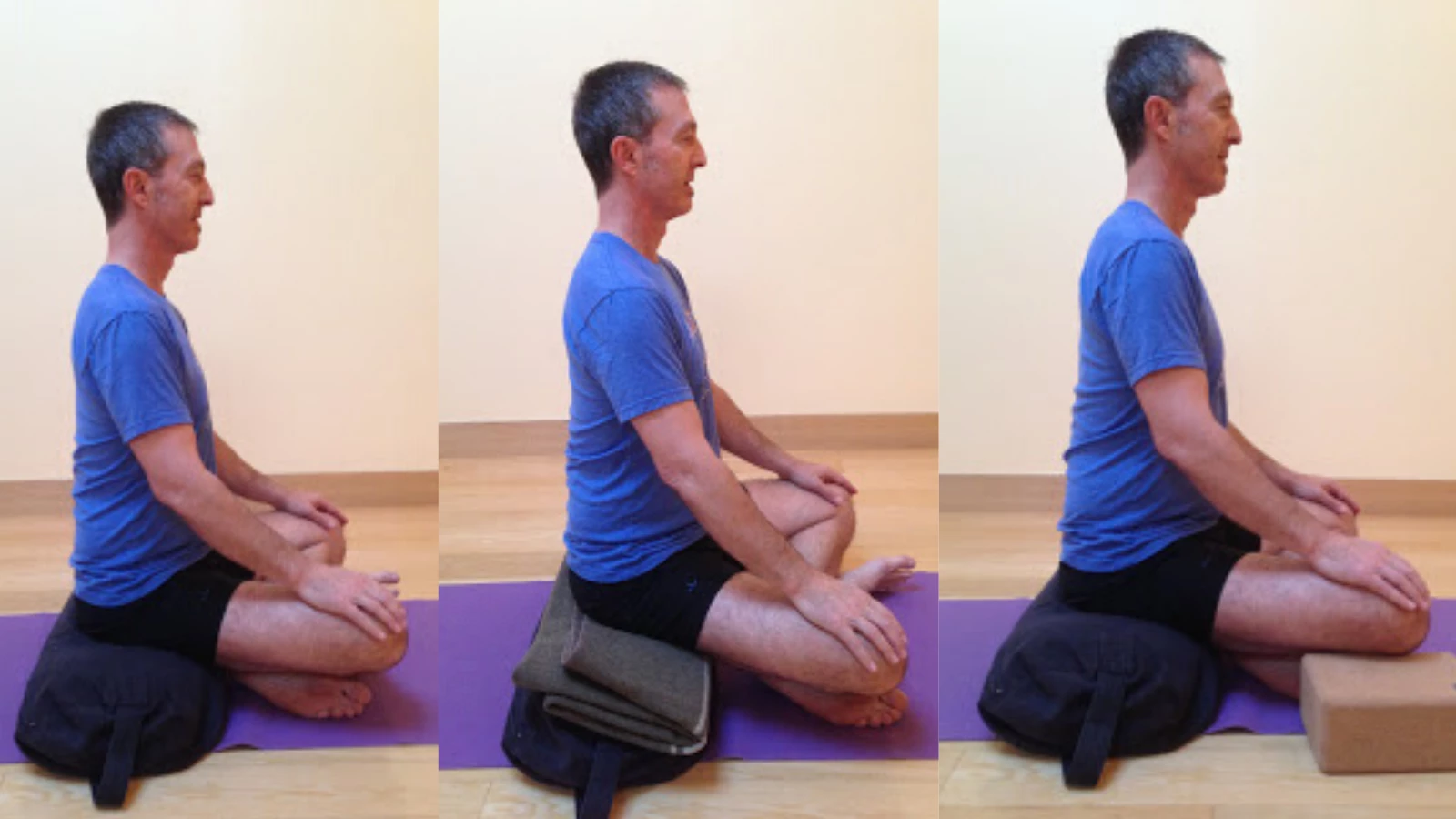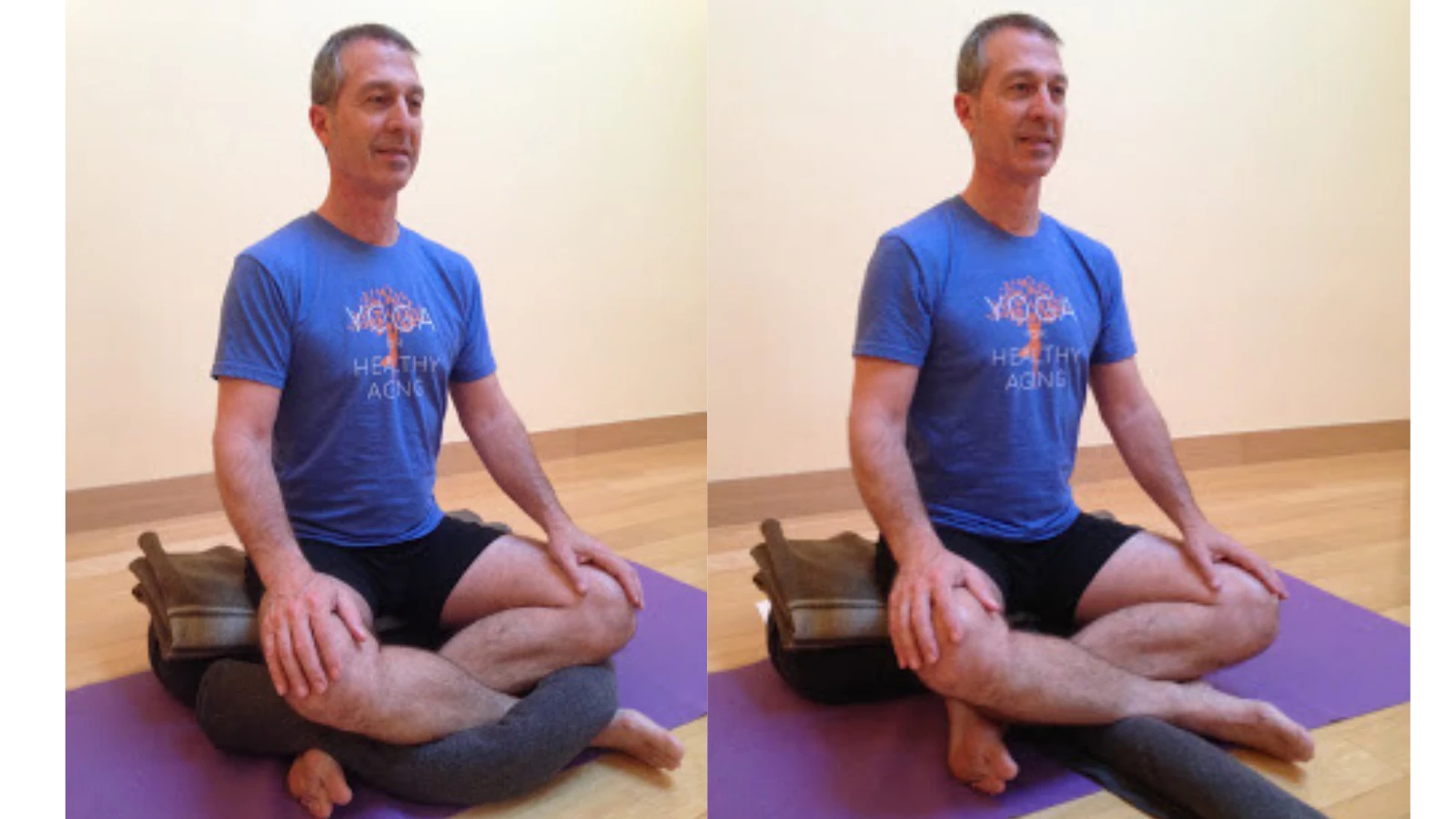Yoga’s Easy Sitting Pose: How to Make it Easier

Learning to sit comfortably on the floor is as important for a basic asana practice as it is for seated meditation. Yet for many people, this is not an easy task!
So in this post, I’m going to address a question I received from a reader regarding sitting with crossed legs:
“Something missing for me here: I can’t sit cross-legged because my knees won’t go down and my ankles can’t stand the bend caused by knees less than halfway to the floor. I couldn’t do this even when I was young, flexible, and lean. Help?”
This reader highlights a reality that many of my students encounter when trying to take a comfortable seat in yoga: their bodies don’t allow them to sit easily in a cross-legged position. This is not due to lack of work on the poses that can open and strengthen them to improve their ability to sit, but instead due to something much more basic: the structure of their bodies. It turns out some people’s skeletons and connective tissue just don’t permit enough movement—particularly in the hip joint—to allow the pelvis and femur bones (thigh bones) to take the ideal positions for sitting comfortably. This usually becomes apparent after a practitioner has spent a reasonable amount of time trying to improve his or her sitting position without seeing any changes in those joints.
So today I’m going to make some suggestions for these individuals, and I suspect many of you (or your students) fall into that category! Here are my four basic recommendations:
1. Support Your Sitting Bones
First, make sure you have adequate support under your sitting bones to elevate your hip joints for sitting. Start by placing a folded blanket or the cushion from a chair under your sitting bones and see if your hips are at or above the level of your knees. If this support isn’t enough to bring your knees to the same level as your hips, I suggest you try sitting on two to three folded blankets, on a block, or on the edge of a firm bolster. If your knees are typically very high, adding a blanket folded on top of a bolster might be necessary to bring the knees in line with hips.

You will have to experiment with how much height you need to bring your hips even with or higher than your knees. An additional benefit—besides making you more comfortable and allowing you to maintain the natural curve of your lower back—is that sometimes when your support is high enough, you might feel a release in your pelvis and hip joints and your knees might release a bit more than expected.
2. Support Your Knees and Ankles
I suggest that you also experiment with using some support under your knees. Using a block on each side as shown in these photos may immediately resolve any pain in your knees or hips (and maybe even your ankles).

If you do all that and your ankles are still uncomfortable, try rolling a blanket and wrapping it around your ankles and under your knees. This alone may support and cushion your ankles and support your knees. (below left)

Another way to use the blanket for your ankles is to make a long, narrow roll and place it under your ankles where they cross, from your seated support forward. From my experience, this often brings an audible sigh of relief for those with sensitive ankles. (above right)
3. Create Your Inner Lift
As you build strength and flexibility in your spine with poses such as Salamba Matsyasana (Supported Fish Pose), Salabhasana (Locust Pose) and Dhanurasana (Bow Pose), add in an internal movement I call creating your “inner lift.” To do this, as you sit, focus on lengthening the center of your spine up from your sitting bones through the crown of your head.
Notice how long you can maintain this feeling of inner lift before you begin to sag and lose support. Then, try to re-establish the movement again for a while. If you start to tire and can no longer easily maintain your inner lift, stop for the day and note how long you sat. Gradually try to spend more time in your seated position, so that eventually you will be ready to sit for longer periods of time.
4. Rest Your Legs 
If you find yourself in a situation where you need to spend a long time sitting on the floor and you realize that even in your preferred position your legs are starting to go numb or you are feeling pain, try switching to a different supported form Easy Sitting Pose to see if that helps give your legs a rest.
Unfortunately, even with all of these propping options, some of my students are still unable to get comfortable Easy Sitting Pose. So if that’s true for you, I recommend you try my personal favorite way to sit: Hero Pose (Virasana) (photo right). And if you just can’t get comfortable on the floor for extended periods, it’s perfectly okay to sit on a chair instead, especially for breath practices or meditation.
Also, read...
4 Easy Ways to Use a Sandbag in Yoga Practice
Exercise and Longevity: Diversify Your Yoga Practice for Maximum Benefits
Glute Amnesia: Yoga for Your Forgotten Rear
Related courses
Breath as Medicine: Yogic Breathing for Vital Aging
Yoga and Myofascial Release: Releasing Chronic Tension with the Bodymind Ballwork Method

Baxter Bell, MD, C-IAYT, YACEP, fell in love with yoga in 1993 while he was working full-time as a family physician. His appreciation for the potential of yoga to foster health, healing, and equanimity was so great that he soon stepped down from his medical practice and trained to become a yoga teacher. Now, he focuses on teaching yoga full time, both to ordinary students of all ages and physical conditions and to the next generation of yoga teachers and yoga therapists, to whom he teaches anatomy and yoga therapy along with his accessible, skillful style of yoga. He also sees students privately, helping them use yoga to help heal from and/or cope with a wide range of medical conditions. At this point, with 23+ years of teaching experience under his belt, Baxter brings a unique perspective to his teaching, combining his understanding of anatomy and medicine with his skill at instructing people from all walks of life and all levels of ability.
In addition to teaching classes, workshops, and retreats internationally, Baxter is a past presenter at Yoga Journal Conferences and the International Association of Yoga Therapy’s Sytar Conference and teaches online courses and classes at Yoga U Online. Baxter is also the co-author of the popular and ground-breaking book Yoga for Healthy Aging and his blog, “What’s On Your (Yoga) Mind,” where he shares his knowledge of medical conditions, anatomy, yoga, and more with practitioners and teachers across the world. He has written articles for the Yoga Journal and the Journal of the International Association of Yoga Therapy. He is often quoted as an expert on yoga and health by major national news outlets such as the Washington Post and the Wall Street Journal. To learn more, visit www.baxterbell.com, and his YouTube channel and Instagram page at Baxter Bell Yoga.



